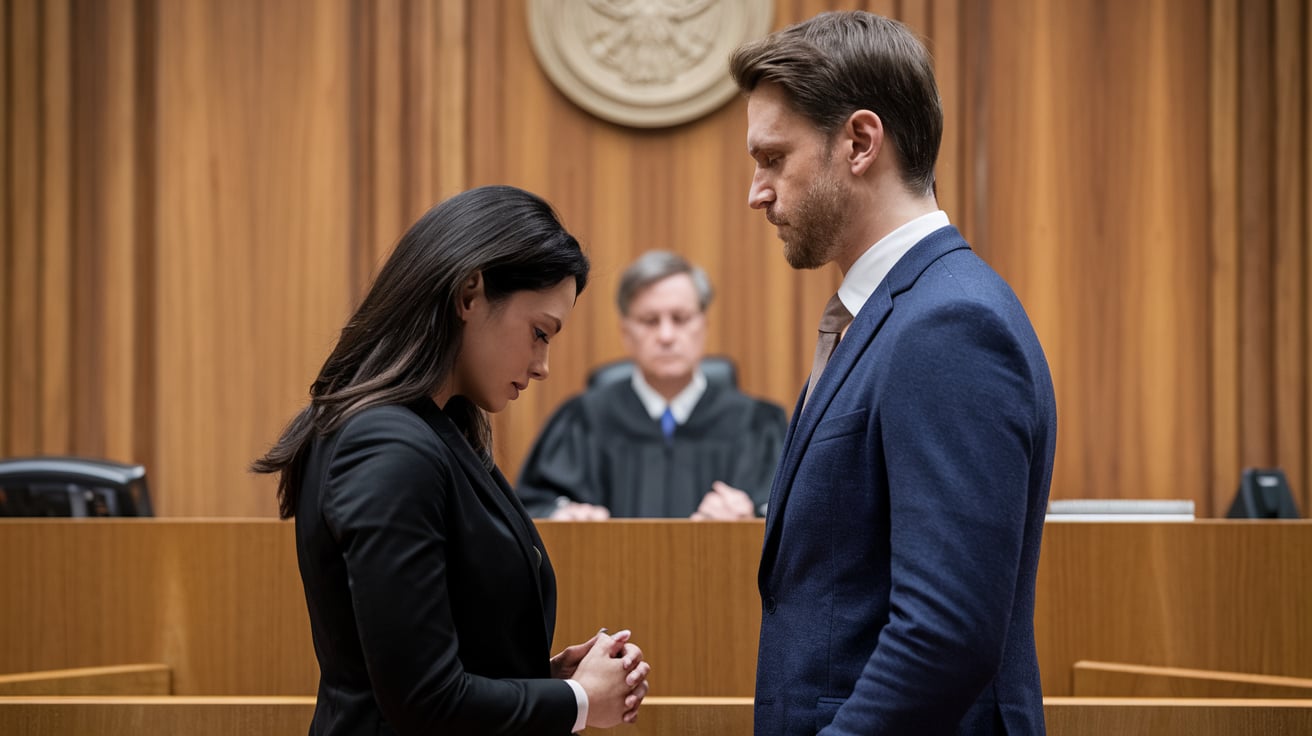Money matters in divorce and can give anyone a headache.
When it comes to splitting retirement accounts, there’s one question that often causes confusion: Who pays for the QDRO?
Many couples going through divorce feel stuck when this topic comes up. Some believe the person getting the retirement funds should pay, while others think both parties should split the cost.
There’s no one-size-fits-all answer, but there are smart ways to handle these fees.
To know who is responsible for the QDRO fees, it is important to understand what they mean.
Who Pays for QDRO Fees in Divorce Settlements

When it comes to QDRO fees, both parties in a divorce often share the cost. The reason is simple: both spouses typically benefit from having retirement assets divided correctly, but it largely depends on the specific circumstances and what the divorce agreement states.
Most divorce courts prefer a 50/50 split of QDRO fees between spouses. Your lawyer can help put this agreement in writing as part of your divorce settlement. Some couples work it into their overall divorce costs, making it part of the bigger financial picture.
In any case, both parties should be prepared for some financial responsibility when it comes to the QDRO.
Key Points to Remember
- The basic QDRO fee usually covers document preparation and filing with the court. This can cost between $500 to $1,500.
- Additional costs might pop up if the retirement plan needs special handling or if multiple accounts need splitting.
- Some attorneys include QDRO preparation in their overall divorce fees, but many consider it a separate service.
- Plan administrators might charge extra fees to review and implement the QDRO. These fees often range from $300 to $1,200.
- Simple 401(k) splits typically cost less than complex pension plans or multiple account divisions.
- Getting price quotes from several QDRO specialists helps find reasonable rates without compromising quality.
Common Approaches to Dividing QDRO Costs

Several established methods exist for allocating QDRO-related expenses between divorcing parties.
Here are some common approaches to dividing QDRO costs:
- Equal Division: Most couples split QDRO fees right down the middle. It’s simple and straightforward – if the cost is $1,000, each person pays $500. Courts often prefer this method since it puts the same burden on both parties. Plus, when both spouses make similar incomes, this approach makes perfect sense.
- Income-Based Split: Some couples divide the fees based on what each person earns. For instance, if one spouse makes twice as much as the other, they might pay two-thirds of the QDRO cost. This way acknowledges that people have different abilities to pay.
- Asset-Value Distribution: Here’s an interesting approach: the split matches how much each person gets from the retirement account. If someone receives 75% of the retirement funds, they pay 75% of the QDRO fees. It’s like paying for what you get.
- Benefit Recipient Pays: Sometimes, the person getting part of their ex’s retirement account pays all QDRO fees. The logic? They are gaining access to money they didn’t have before, so the cost comes from their side.
- Plan Participant Pays: In other cases, the person who owns the retirement account covers all fees.
This often happens when they have more financial resources or when it’s part of the overall settlement deal. - Negotiated Agreement: Many couples work this out during divorce negotiations. They might trade other assets or adjust support payments to account for QDRO costs.
It becomes part of their total settlement package. - Court-Ordered Distribution: When couples can’t agree, judges step in. They look at each person’s finances, the size of the retirement assets, and other factors before deciding who pays what.
Tips to Minimize QDRO Costs During Divorce

When going through a divorce, one of the most complex financial aspects is dealing with the division of retirement assets.
A Qualified Domestic Relations Order is required to split these assets, but it can come with significant costs.
1. Hire a QDRO Specialist
Attorneys charge high fees, especially if they aren’t well-versed in QDROs. Many lawyers handle these orders only occasionally, which means they might take longer or make mistakes that lead to additional legal costs.
A QDRO specialist, on the other hand, focuses solely on drafting these documents. Their expertise ensures accuracy and prevents delays, which can save a significant amount of money.
Most specialists charge a flat fee, making the cost predictable and manageable. Choosing the right professional from the start can prevent costly back-and-forth revisions.
2. Use a Pre-Existing Template
Many retirement plans offer pre-approved QDRO templates, which can simplify the process and reduce expenses. These templates meet the specific requirements of the retirement plan, eliminating the need for extensive legal work.
Using a model, QDRO minimizes the chances of errors or rejection from the plan administrator. This saves time and avoids extra attorney fees for revisions.
Before paying for a custom QDRO, check if the retirement provider offers a template—this one step can significantly cut costs.
3. Negotiate a Flat Fee with the QDRO Professional
Some professionals charge hourly rates for drafting QDROs, which can quickly become expensive if the process takes longer than expected. Hourly billing often leads to unpredictable costs, especially when multiple revisions or consultations are required.
Instead, negotiating a flat fee upfront makes sure of a clear understanding of the total cost. Many QDRO specialists offer this option, allowing both parties to budget accordingly without worrying about rising expenses.
A fixed price structure removes uncertainty and helps keep financial stress to a minimum.
4. Avoid Additional Legal Fees
Not all attorneys are experts in QDROs, and hiring the wrong lawyer can result in costly mistakes. Some lawyers may need extra time to research plan requirements, leading to more billable hours and increased expenses.
Working with a lawyer who specializes in QDROs helps avoid these unnecessary legal costs. An experienced attorney will already understand plan rules, reducing the risk of costly revisions.
Choosing the right legal professional makes sure that the process moves quickly and efficiently without extra charges piling up along the way.
5. Review All Fees Involved
Many couples overlook the hidden costs associated with QDROs. Retirement plans often charge administrative fees for processing these orders, which can range from a few hundred to over a thousand dollars.
Before finalizing the QDRO, it’s important to clarify all potential costs with the retirement plan provider and the professional handling the document. Knowing the full breakdown of expenses helps avoid surprises and makes sure that both spouses agree on how the fees will be paid.
Taking this step early can prevent last-minute disputes and additional legal intervention.
6. Separate Retirement Accounts Before Finalizing the Divorce
Multiple retirement accounts mean multiple QDROs, and each one comes with its own set of fees. If retirement assets are divided across different plans, the cost of processing multiple orders can add up quickly.
Consolidating retirement funds before filing a QDRO can reduce the number of required orders, minimizing administrative fees.
This is especially useful for spouses with multiple 401(k)s or pension plans. Consulting with a financial expert before finalizing the divorce agreement can help streamline asset division and cut unnecessary costs.
Conclusion
To sum it up, money talks, but clarity matters more in QDRO fees.
So, the smartest move is to talk with a qualified attorney about the best approach for your specific situation.
These costs might seem like just another item on a long list of divorce expenses, but they need careful attention.
So, getting help doesn’t have to mean that you are weak. Many people have walked this path before. Take it one step at a time.
The right support will make this process smoother for everyone involved.
Frequently Asked Questions
Is There a Statute of Limitations for Filing a QDRO?
Most states do not have a specific statute of limitations for filing a QDRO. Still, filing as soon as possible after the divorce is finalized is strongly recommended to protect retirement benefit rights.
How Long After a Divorce Can You File a QDRO?
A QDRO can typically be filed at any time after divorce, as long as both parties are alive and the retirement account still exists.
How Much Does a 401k QDRO Cost?
The cost of obtaining a QDRO can range from $500 to $2,000 or more, depending on the complexity of the retirement plan and other factors.








